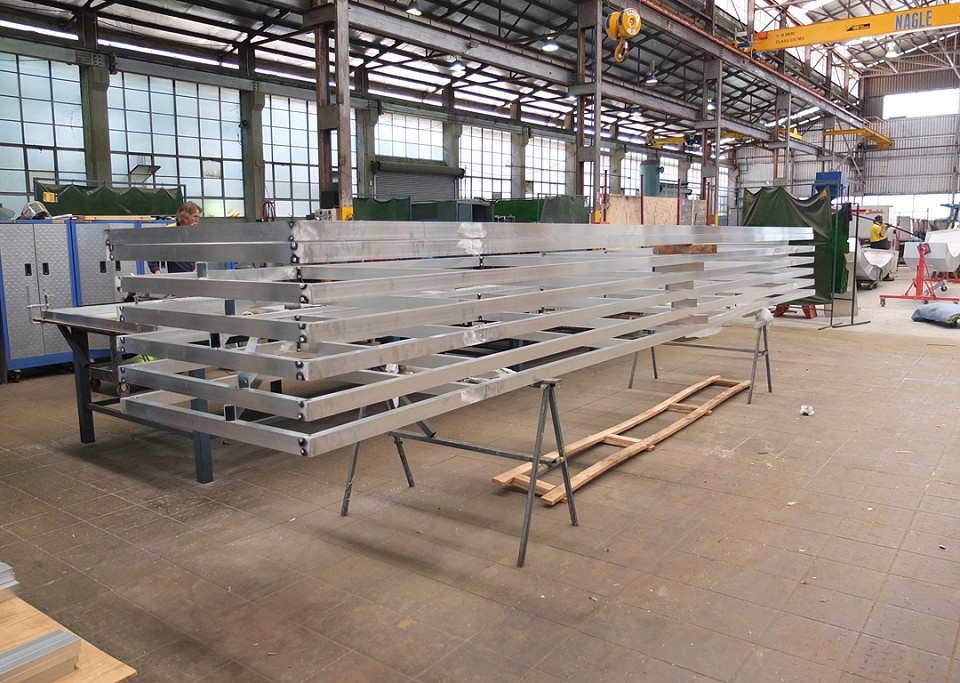about the work
The artwork pays respect to the elegant contemporary architecture designed by BVN design. While sitting in harmony with the new building Night Watch calls upon the knowledge of the previous building on this site—the old H.Pole Printery, founded in 1915.
Night Watch is located on the back wall of the three storey terrace, above the entrance. Night Watch generates a message that is visible to the public via a LED low emissions lighting system. The works function as a beacon, a signal or clock tower that has limited maintenance issues.
The work generates a pulse offering a compelling response or heart beat of the city. The work also acknowledges the heritage of the site: a place for active print production and original land of the local indigenous peoples.
The LED wall generates short texts, starting out as clearly readable sentences that slowly become squashed and stretched, becoming anamorphic and abstract. The text is animated across the screen from right to left finally ending in a linear pattern, which floats in the sky as a Morse code light message. The LED lights generate greater light throw therefore enabling distant viewer access to the artwork. The message moves from being clearly representational to an abstracted coded pattern.
what is the message?
Over 500 years ago Guttenberg invented the printer, leading to mass literacy and easy exchange of information. The internet and associated information technologies are also transforming the way people live and work.
The text pays homage to the printing press revolution. Referencing the industrial print age via a quote by Beatrice Warde (1900-69) a typographer of the early 20th century.

research reference
Marshall McLuhan makes reference to Beatrice Warde in his seminal book Understanding Media: extensions of man. Below is the excerpt
“Like any other extension of man, typography had psychic and social consequences that suddenly shifted previous boundaries and patterns of culture. In bringing the ancient and medieval worlds into fusion –or, as some would say, confusion – the printed book created a third world, the modern world, which now encounters a new electric technology or a new extension of man. Electric means of moving of information are altering our typographic culture as sharply as print modified medieval manuscript and scholastic culture. Beatrice Warde has recently described in Alphabet an electric display of letters painted by light. It was a Norman McLaren movie advertisement of which she asks:
…do you wonder that I was late for the theatre that night, when I tell you that I saw two club-footed Egyptian A’s…walking off arm-in-arm with the unmistakable swagger of a music-hall comedy-team? I saw base-serifs pulled together as if by ballet shoes, so that the letters tripped off literally sur les pointes… after forty centuries of the necessarily static Alphabet, I saw what its members could do in the fourth dimension of Time, “flux,” movement. You may well say that I was electrified…
Nothing could be farther from typographic culture with its “place for everything and everything in its place.” Mrs. Warde has spent her life in the study of typography and she shows sure tact in her startled response to letters that are not printed by types but painted by light.”
Marshall McLuhan, Understanding Media: the extensions of man, pg 190
credits
Animation: Ian Hobbs.
Urban Art Projects team including Amanda Harris, Andre Vener, Luke Harris and Natasha Smith.
Commissioned by Credit Suisse, Australian Taxation Department and Brisbane City Council
Thanks also to Neil Mackenzie and Asha Forsyth




























